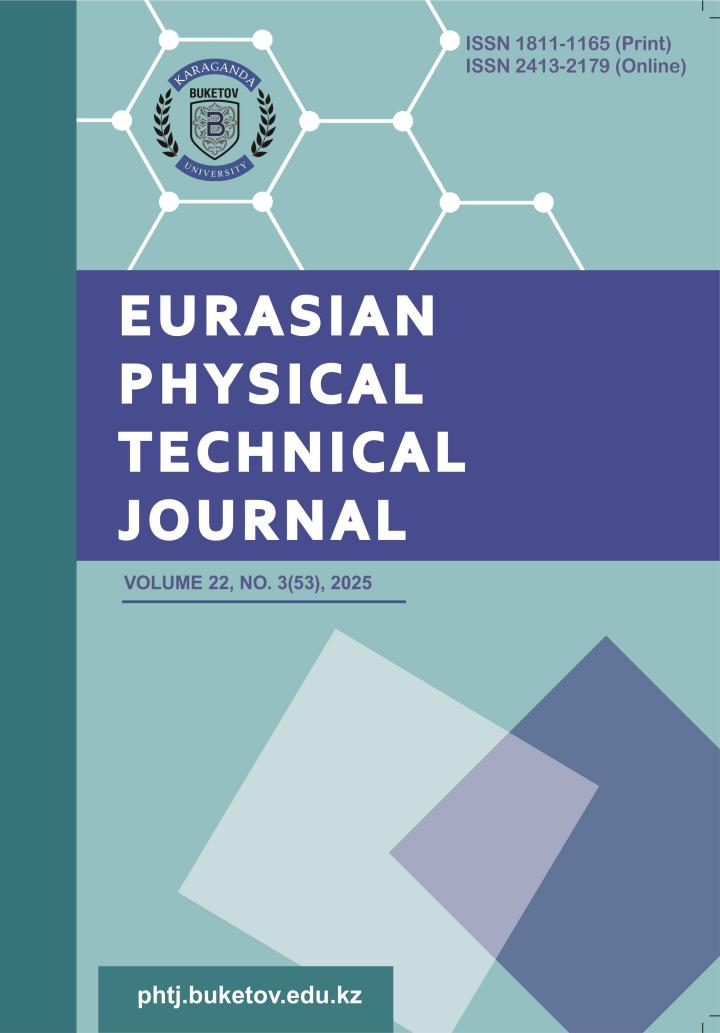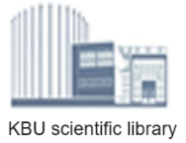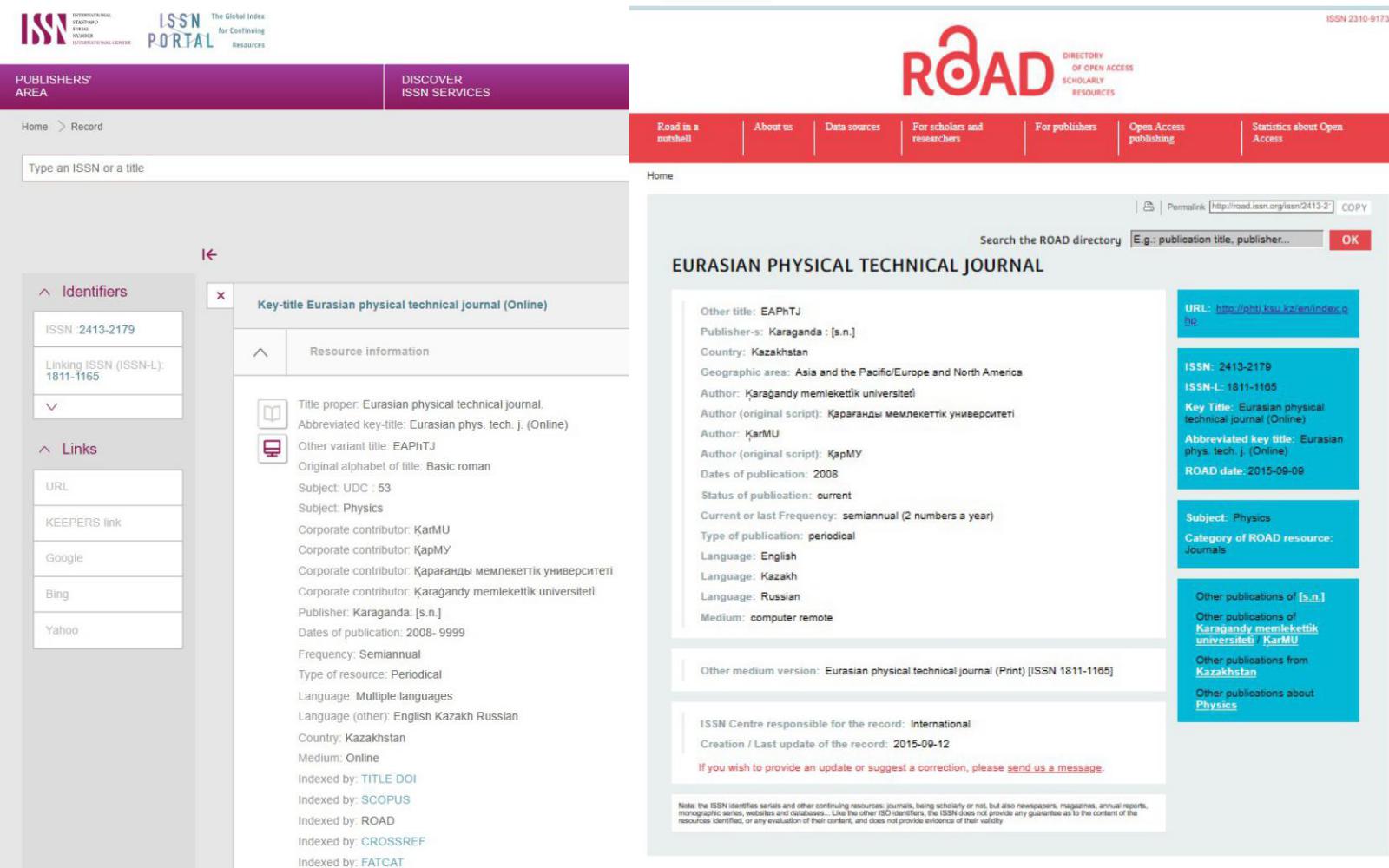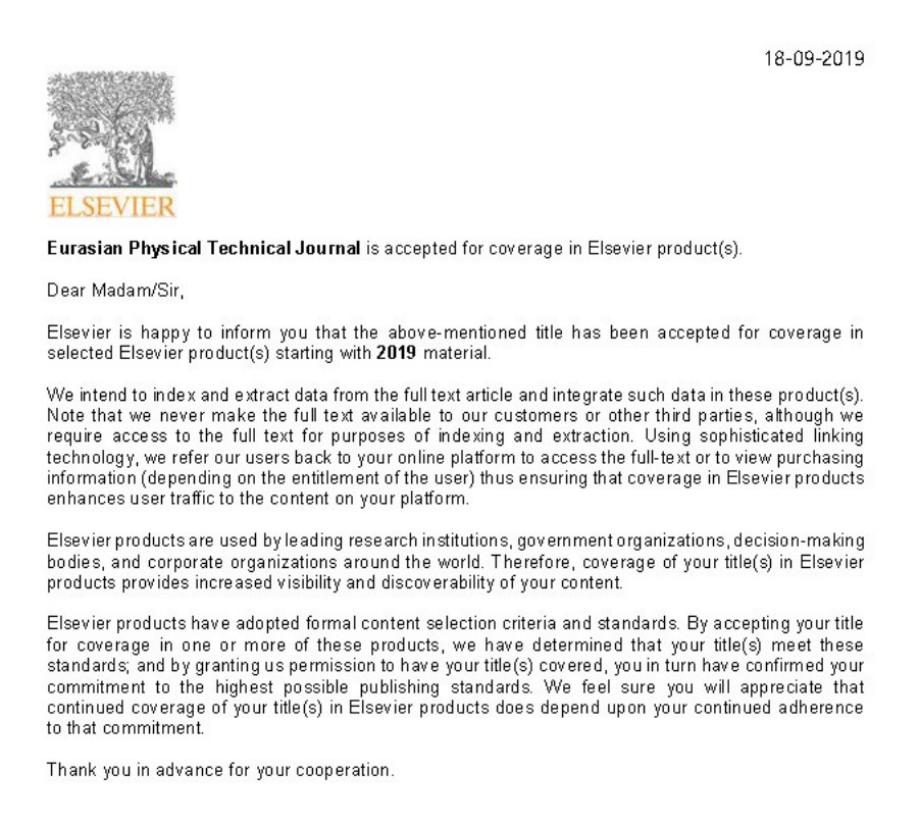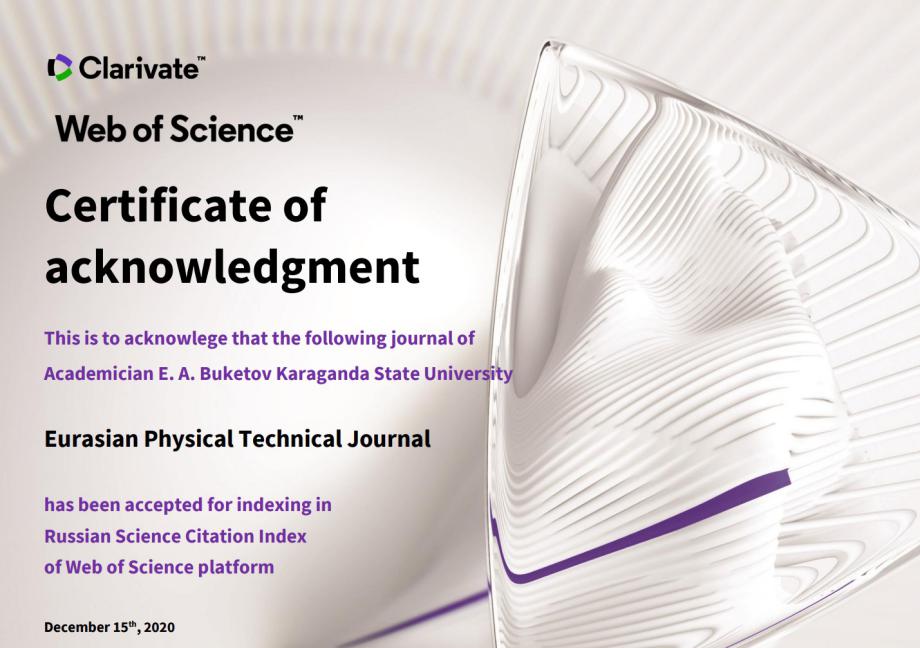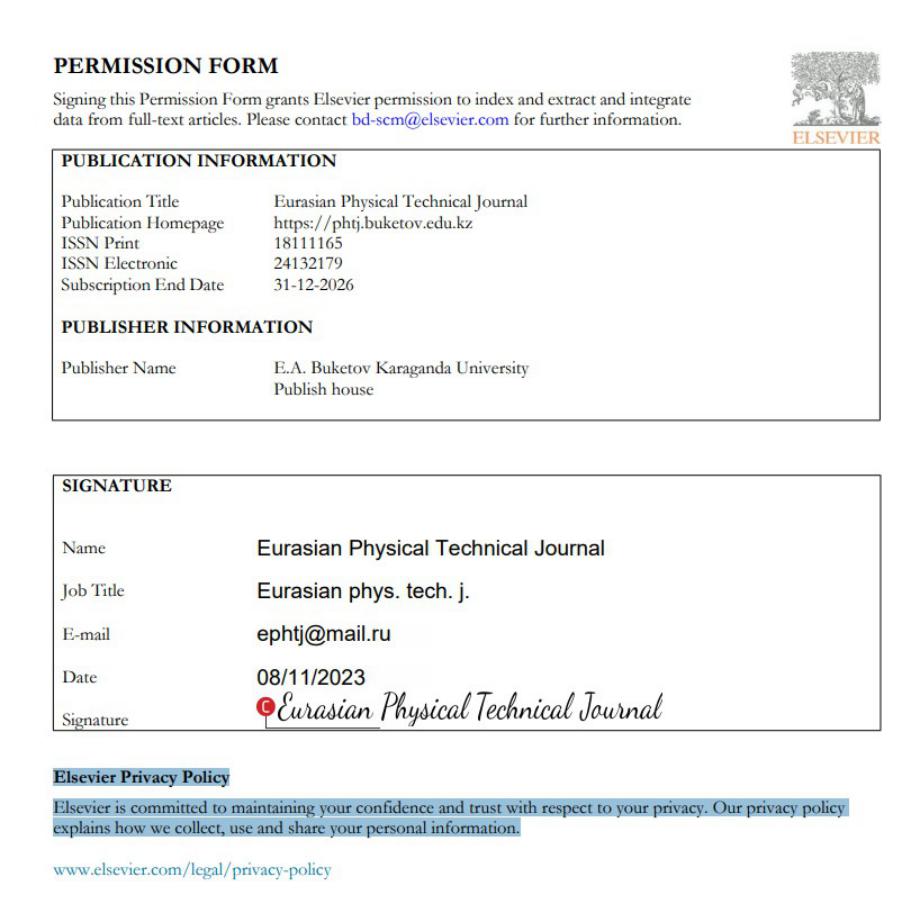Күрделі желілерді тілдік бейімділік эволюциясын динамикалық жүйелер арқылы зерттеу.
DOI:
https://doi.org/10.31489/2025N3/120-126Кілт сөздер:
бейсызық динамика, күрделі жүйелер, желілерАңдатпа
Бұл жұмыста құрылымдалған агенттер популяциясында тіл үшін бәсекелестік пен тілдік бейімділіктің эволюциясын зерттеуге арналған динамикалық жүйелер моделі ұсынылған. Әр агент тілге қатысты ұстанымын сипаттайтын үзіліссіз бейімділік айнымалысы арқылы сипатталады және бұл айнымалы агенттердің өзара әрекеттесуі, тілді сақтау және сыртқы әлеуметтік бедел күштерінің бірлескен ықпалымен дамиды. Модельде агенттің бейімділігін минус бір мен бір аралығында шектеп тұратын бейсызық демпфирлеу механизмі қарастырылған, сондай-ақ қабылдағыштық пен тілді сақтау параметрлерінің әртүрлілігі, гетерогенділігі ескеріледі. Модельдің сызықты режимі талданып, симметриялы және асимметриялы желілік топологиялар жағдайында орнықты нүктелердің тұрақтылығы зерттеледі. Толық байланысқан және «шағын әлем» типті желілердегі модельдеу нәтижелері әртүрлі динамикалық сценарийлерді көрсетеді: тілдің жойылуы, қостілділіктің сақталуы және популяцияның қарама-қарсы тілдік топтарға өздігінен бөлінуі. Бұл нәтижелер тіл динамикасын қалыптастыруда әлеуметтік құрылым, тұлғалық сәйкестік және сыртқы ықпалдардың өзара байланысын түсінуге мүмкіндік береді.
References
Abrams D.M.,Strogatz S.H. (2003) Modelling the dynamics of language death. Nature, 424, 900. https://doi.org/10.1038/424900a DOI: https://doi.org/10.1038/424900a
Castelló X., Eguíluz V.M., Miguel M.S. (2006) Ordering dynamics with two non-excluding options: Bilingualism in language competition. New Journal of Physics, 8, 308. https://doi:10.1088/1367-2630/8/12/308 DOI: https://doi.org/10.1088/1367-2630/8/12/308
Patriarca M., Leppänen T. (2004) Modeling language competition. Physica A, 338, 296. https://doi.org/10.1016/j.physa.2004.02.056 DOI: https://doi.org/10.1016/j.physa.2004.02.056
Kandler A., Steele J. (2008) Ecological models of language competition. Biological Theory, 3, 164. https://doi.org/10.1162/biot.2008.3.2.164 DOI: https://doi.org/10.1162/biot.2008.3.2.164
Mira J., Paredes A. (2005) Interlinguistic similarity and language death dynamics. Europhysics Letters, 69, 6. https://doi.org/10.1209/EPL/I2004-10438-4 DOI: https://doi.org/10.1209/epl/i2004-10438-4
Fagioli S., Radici E. (2021) Opinion formation systems via deterministic particles approximation. Kinetic and Related Models, 14, 1. https://doi:10.3934/krm.2020048 DOI: https://doi.org/10.3934/krm.2020048
Sperlich S., Uriarte J. (2018) The Economics of Minority Language Use: Theory and Empirical Evidence for a Language Game Model. SSRN Electronic Journal, 1. https://doi:10.2139/ssrn.3445345 DOI: https://doi.org/10.2139/ssrn.3445345
Marchetti G., Patriarca M., Heinsalu E. (2020) A bird’s-eye view of naming game dynamics: From trait competition to Bayesian inference. Chaos, 30, 6, 063119. https://doi.org/10.1063/5.0009569 DOI: https://doi.org/10.1063/5.0009569
Marchetti G., Patriarca M., Heinsalu E. (2020) A Bayesian Approach to the Naming Game Model. Front. Phys., 8, 00010. https://doi:10.3389/fphy.2020.00010 DOI: https://doi.org/10.3389/fphy.2020.00010
Marchetti G., Patriarca M., Heinsalu E. (2021) The role of bilinguals in the Bayesian naming game. Physica D, 428, 133062. https://doi.org/10.1016/j.physd.2021.133062 DOI: https://doi.org/10.1016/j.physd.2021.133062
Mudd K., De Vos, C., De Boer, B. (2020) An agent-based model of sign language persistence informed by real-world data. Language Dynamics and Change, 10(2), 158-187. https://doi.org/10.1163/22105832-bja10010 DOI: https://doi.org/10.1163/22105832-bja10010
Charalambous C., Sanchez D., Toral R. (2023) Language dynamics within adaptive networks: an agent-based approach of nodes and links coevolution. Frontiers in Complex Systems, 1. https://doi.org/10.3389/fcpxs.2023.1304448 DOI: https://doi.org/10.3389/fcpxs.2023.1304448
Gao Y, Liu W (2023) Measures to sustain endangered languages: A bilingual competition model with sliding mode control. PLoS ONE, 18(6): e0287850. https://doi.org/10.1371/journal.pone.0287850 DOI: https://doi.org/10.1371/journal.pone.0287850
Boissonneault M., Vogt P. (2021) A systematic and interdisciplinary review of mathematical models of language competition. Humanit Soc Sci Commu, 8, 21. https://doi.org/10.1057/s41599-020-00683-9 DOI: https://doi.org/10.1057/s41599-020-00683-9
Soriano-Panos D., Lotero L., Arenas A., Gómez-Gardeñes J. (2018) Spreading Processes in Multiplex Metapopulations Containing Different Mobility Networks. Phys. Rev. X, 8, 031039. https://doi.org/10.1103/ PhysRevX.8.031039 DOI: https://doi.org/10.1103/PhysRevX.8.031039
Zhanabaev Z.Z., Kozhagulov Y.T., Zhexebay D.M. (2016) FPGA implementations of scale-invariant models of neural networks. Turkish Journal of Electrical Engineering and Computer Sciences, 24, 6. doi:10.3906/elk-1504-204 DOI: https://doi.org/10.3906/elk-1504-204
Ibraimov M., Tynymbayev S., Skabylov A., Kozhagulov Y., Zhexebay D. (2022) Development and design of an FPGA-based encoder for NPN. Cogent Engineering, 9, 2008847. https://doi.org/10.1080/23311916.2021.2008847 DOI: https://doi.org/10.1080/23311916.2021.2008847
Ussipov N., Akhtanov S., Zhanabaev Z., Turlykozhayeva D., Karibayev B., Namazbayev T., Almen D., Akhmetali A., Tang X. (2024) Automatic modulation classification for MIMO system based on the mutual information feature extraction. IEEE Access, 12, 68463 – 68470. doi:10.1109/access.2024.3400448 DOI: https://doi.org/10.1109/ACCESS.2024.3400448
Turlykozhayeva D.A., Akhtanov S.N., Baigaliyeva A.N., Temesheva S.A., Zhexebay D.M., Zaidyn M., Ussipov N.M., Skabylov A.A. (2024) Evaluating routing algorithms across different wireless mesh network topologies using NS-3 simulator. Eurasian Physical Technical Journal, 21, 2(48). https://doi.org/10.31489/2024No2/70-82 DOI: https://doi.org/10.31489/2024No2/70-82
Turlykozhayeva D., Temesheva S., Ussipov N., Bolysbay A., Akhmetali A., Akhtanov S., Tang X. (2024) Experimental performance comparison of proactive routing protocols in wireless mesh network using Raspberry Pi 4. Telecom, 5(4), 1008-1020. https://doi.org/10.3390/telecom5040051. DOI: https://doi.org/10.3390/telecom5040051
Ibraimov M.K., Kozhagulov Y.T., Zhexebay D.M., Sarmanbetov S.A. (2023) Implementation of functional block radio unit based on system-on-chip. Eurasian Physical Technical Journal, 20(4), 74–80. https://doi.org/10.31489/2023No4/74-80 DOI: https://doi.org/10.31489/2023No4/74-80
Watts D., Strogatz S. (1998) Collective dynamics of ‘small-world’ networks. Nature. 393, 440–442. https://doi.org/10.1038/30918 DOI: https://doi.org/10.1038/30918
Downloads
Жарияланды
How to Cite
Журналдың саны
Бөлім
License

This work is licensed under a Creative Commons Attribution-NonCommercial-NoDerivatives 4.0 International License.

